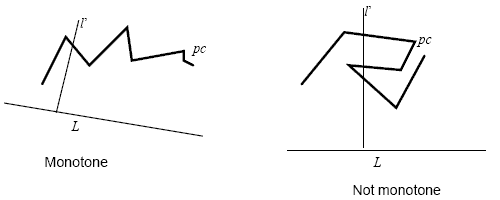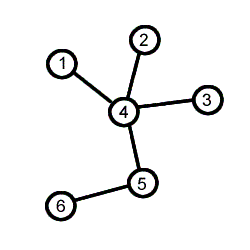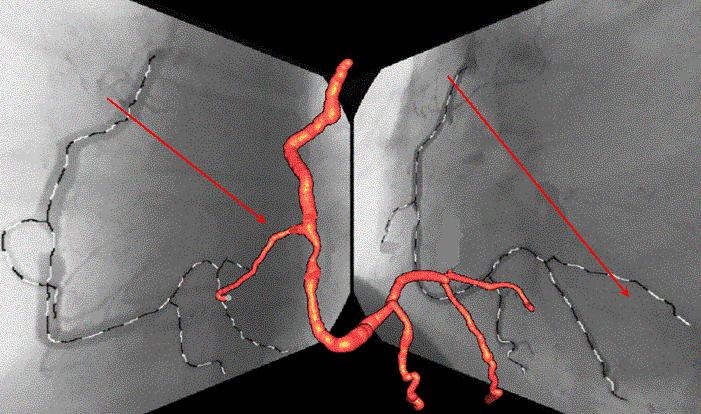
Next: Monotonicity Issues
Up: Projections
Previous: Crossing-free Projections
Projections that preserve monotonicity of trees find applications in medical imaging. Let's think about arteries and veins, the visualisation is far more easy if they run in a single direction. Our purpose is to find projections which conserve this property of monotonicity in some directions and to identify them.
Our objects of interest at here are polygonal chains and trees, let's see what they look like.

A polygonal chain, pc, is monotone if there exists a line L such that all lines l' perpendicular to L intersect pc at most once.

And for the trees:
 See more detailed definition on MathWorld or Wikipedia.
See more detailed definition on MathWorld or Wikipedia.
Finally, a polygonal chain or a tree may not admit a crossing free projection, but it may admit a projection which is monotonic in some direction. We can observe two projections of a vein on the following picture, and both have definitely a projection monotonic in one direction shown in red arrow.

We will see in the next chapter the main issues and complexity of finding monotonic projections.
Contact us :
Jean HERBIERE and Yueyun SHU